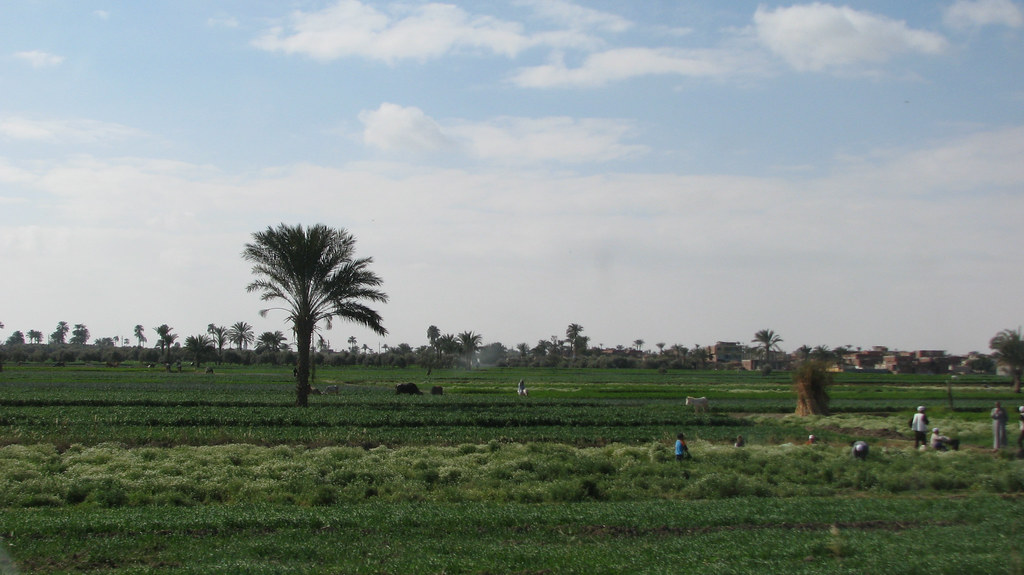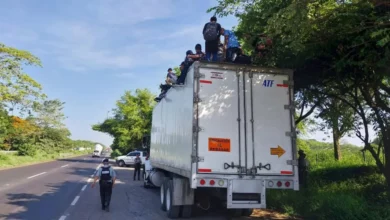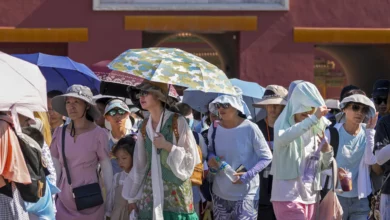
"These beans are miraculous because they beat droughts," crowed Manuel Ceren, a farmer in El Salvador trying out a hybrid, climate change-defying crop produced by Salvadoran, Colombian and Honduran experts.
In Quezaltepeque, a village 30 km north of San Salvador, Ceren and 13 other co-farmers feel fortunate to be the first testing the bean.
They proudly showed off an abundant harvest of around 0.7 of a hectare (1.7 acres) of the bean grown on the farm where they work, to the awed gaze of visitors.
"We were very careful with this initial experiment with these beans, which were hit with a 15-day drought and two storms," the 45-year-old manager of the farm, Baltazar Garcia, told AFP.
"Other people called us crazy. But today a lot of them are admiring the harvest."
The type of light red bean they are using, which is also resistant to an infection known as bean golden yellow mosaic virus, was painstakingly developed with the help of El Salvador's National Center for Agricultural and Forestry Technology (CENTA).
Dubbed CENTA-EAC, the bean is not a biotech crop designed by genetic engineers slicing up chromosomes.
Rather it is the product of hybridization: the combining of naturally formed plants to form a cross-breed.
"You could say it's the simple cross-fertilization of red bean and black bean plants in a process that in this case took five years of selecting and discarding plants until the desired variety was created," a CENTA researcher, Aldemaro Clara, explained.
A search for better crops
The Salvadoran experiment came as a prolonged drought settled on Central America this year, causing heavy crop losses across a broad swathe of land stretching from Costa Rica to Guatemala.
Because of the lack of water, 2.3 million small Central American farmers will need food aid, the UN's World Food Program has warned.
The CENTA-EAC bean is part of a decade-old effort by laboratories in the region to come up with hybrids able to survive and even prosper during the recurring droughts. With the help of farmers, it was noted that it was possible to come up with crops adapted to extreme weather conditions.
"Our mission to produce seeds resistant to climate change, which in this region means against high temperatures, long droughts and extremely heavy rainy seasons," Rolando Ventura, another CENTA researcher, said.
The whole region is working along the same lines. In Guatemala, scientists are working on the ICTA-Chorti, which will not only resist droughts but also be rich in iron.
In Nicaragua, another institute has made a variety of red bean, the INTA-Tomabu, also able to survive when water is scarce.
Corn, tomatoes and cacao
Candida Lazon, who is trying out that bean on her farm, said: "Here, it almost never rains. We have managed to grow the INTA-Tomabu bean by watering it just once every 12 days. I'm thrilled about this seed because it adapts to the very dry local climate."
It's not beans that are being made to "adapt" to climate change.
In Panama, one of the first countries in the region to work with types of corn resistant to changing weather, has come up with a new seed.
"In the case of corn, these seeds are compatible with higher temperatures, 35 to 36 degrees (95 to 97 degrees Fahrenheit), and drought-tolerant," said Jose Alberto Yau, deputy director for seeds at the country's IDIAP Agriculture and Fishing Research Institute.
In El Salvador, farmers already have the option of using a type of corn called CENTA-Pasaquina, but it has fallen from favor because of its perceived low yield.
Nicaragua meanwhile has a type of virus-resistant tomato seed christened INTA-Jinotega that copes with temperatures over 25 degrees centigrade.
In Costa Rica, it's cocoa — a crop essential to the economy — that is being looked at in the Tropical Agricultural Research and Higher Education Center with hopes of coming up with a more resistant variety.




